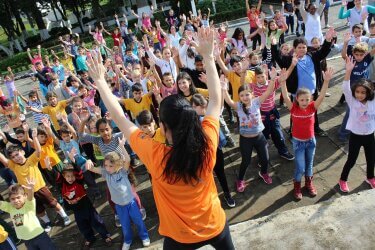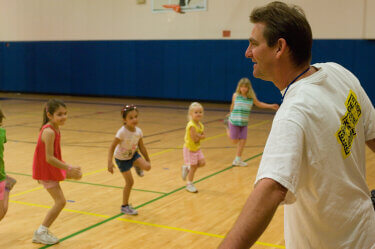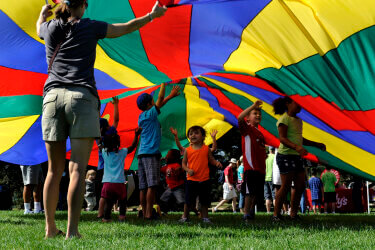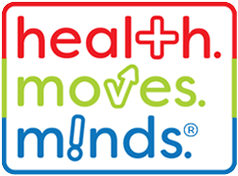Research has informed us that schools that embrace the whole child establish a foundation for academic success, improved school attendance, and a decline in disruptive behaviors among students. These gains are made possible with a specific focus on the unique role that quality skills-based health education and physical education play in a school setting.

It is a very exciting time in health and physical education. After decades of trying to find our place in the educational landscape as a subject area that has been marginalized as a “special” or a “related art,” we are now taking our seat at the table as genuine contributors to our most critical educational questions. One such question is, “How do schools embrace the whole child while maintaining academic rigor and results?” Many believe there are times when we must sacrifice one for the other and that is simply untrue. A commitment to social and emotional learning comes with the understanding that we teach children before content — in all grade levels, at all times.

A New Era
The coronavirus pandemic has catapulted us to a moment in our history that will forever define the way we approach education. What we’ve learned, unequivocally, is that to nurture the social-emotional needs and mental health of school-aged children will be critical as we move into what will be the new normal for our nation’s schools. As we struggle with traditional conversations around later start times for high schools, less or no homework, responsive classrooms, restorative practices, additional counselors, and other academic supports, it is imperative that we remain loyal to what is happening on the inside of each child. The physical and mental health of each student will be at the forefront of learning. It has been and will be, as critical to their academic success as any other instructional activity happening in our schools.

New Resources
After a 27-year career as a teacher, supervisor, and leader in the field, I am excited to report on a service-learning program — health. moves. minds. — that addresses many of the current concerns and questions. This program brings an entire school culture together around free K-12 lesson plans and resources that focus on kindness, mindfulness, empowerment, and advocacy in health and physical education and beyond. It offers opportunities for school- and community-wide instructional activities and initiatives that transform a student culture of stress, anxiety, and depression into thriving environments where acts of kindness are commonplace and mental health is embraced.
In spring 2019, SHAPE America and its national partner, Gopher, piloted the program across the country in 21 schools with varying geographic and socio-economic characteristics. The outcomes for students were extraordinary. By opening the door for students to express kindness and gratitude and teaching strategies in the classroom around mindfulness, the students themselves took ownership of their school environment. Charlotte Danielson, author of the Framework for Teaching, tells us that the highest level of distinguished teaching is the type where students are empowered to lead as the teacher becomes the facilitator of the learning. The health. moves. minds. lessons foster that classroom and school-wide culture.

The lesson plans are transformative. For example, in a first-grade physical education class, students might be engaging in the traditional parachute activity. Surely you remember it from your own experiences. Students shake the parachute vigorously and the teacher adds bean bags and yarn balls that pop into the air like “popcorn.” In the lesson presented by health. moves. minds., the students are asked to imagine that the shaking parachute is their active mind. The objects are now thoughts that might be on their mind. The teacher tosses objects into the parachute and says: “My dog is sick,” “I was late for school,” “I don’t have my homework today.” As the parachute shakes, the thoughts bump into each other and maybe even fall out of the parachute. The teacher then asks students to slow down the parachute and watch the thoughts begin to be still. This begins the instruction lesson on mindfulness.

This lesson and all the other standards-based lessons are free to teachers and include assessments, ideas for equitable groupings in the classroom, and suggestions for accommodations for students with special needs. The resources are available at www.healthmovesminds.org and any teacher or administrator can access the materials without being a professional member of the state or national health and physical education organizations.
New Fundraising Options
The program also strives to introduce students to the thoughtfulness of giving back, not only to their school, but to their community. If desired, schools can create a fundraising team using the flexible online platform, which also includes options for offline donations — plus 50% of the funds raised will go back to the school to support school-wide wellness. Yes, schools receive half of everything they raise in the form of a Gopher gift card that never expires and can be used across all of Gopher’s many educational brands, including Pre-K, movement in the classroom, STEM supplies, and athletics. I know of no other national fundraising program for health and physical education that gives 50% of the funds raised back to the school.

Schools also have the option to keep only 25% of the funds raised while donating 25% to a local charity of their choice. Many of the pilot schools gave to mental health organizations, animal shelters, and the local police, but it can be any certified charitable organization (501c3) that is important and meaningful to the school — it can even be the school’s own PTA/PTO. The aspect of giving back to the community as its own reward is a concept that students have been witnessing daily during the pandemic and that the health. moves. minds. program hopes to foster and instill in young people for a lifetime. The remaining funds are used toward program resource costs (25%), contributions to the state health and physical education organization (15%), and to SHAPE America (10%) so those organizations can continue to provide quality professional development for health and physical educators as well as advocate for our profession on the state and national levels.
Through all my years in public education, I have seen many educational trends come and go. I have never seen lessons as successful as these and with the potential for such a lasting impact. The health of a child is a constant. It’s something we can never ignore as educators or instructional leaders. Safe, healthy, and engaged students are the path to academic success and success in life and work. I am pleased to be able to share this program with my colleagues and urge you to share the lessons and information with your staff. For more information on the health. moves. minds. program, please contact Yasmeen Taji-Farouki, SHAPE America’s senior manager of Community Initiatives and Social Impact, or visit healthmovesminds.org.
